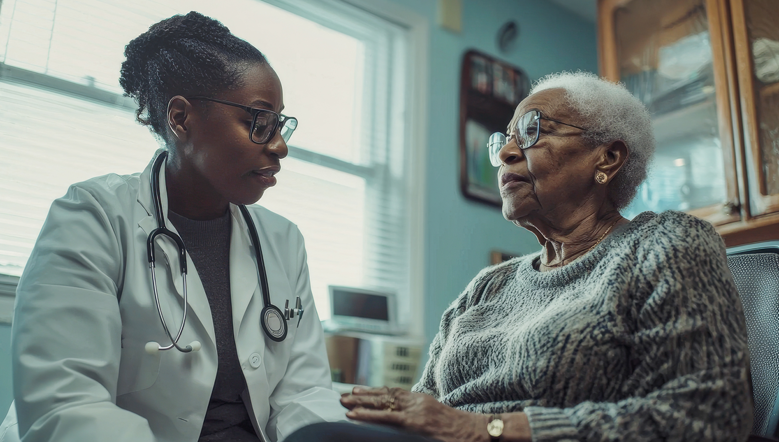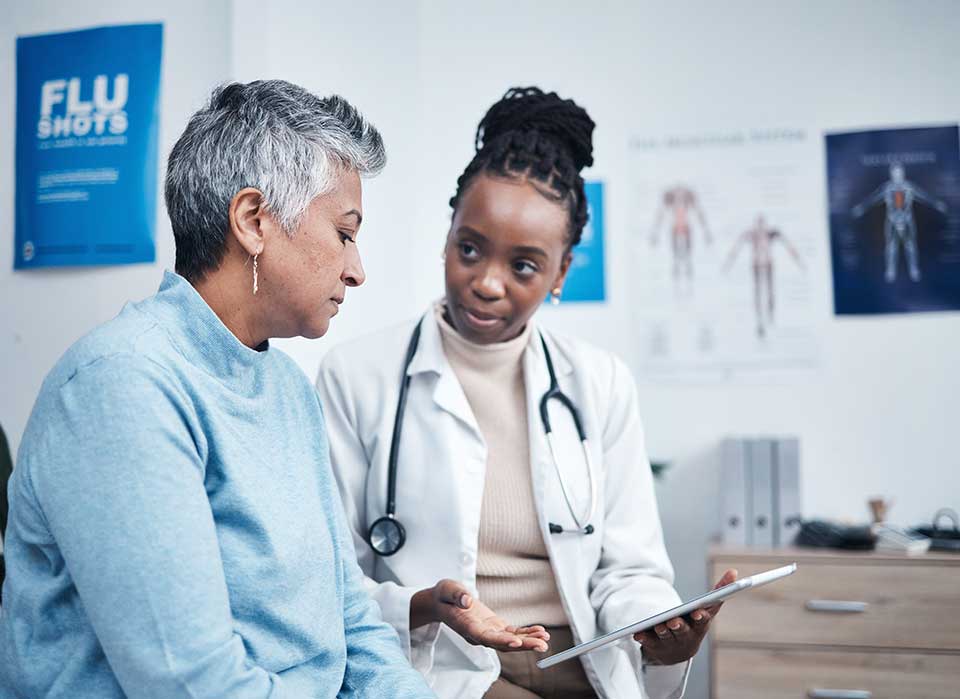
What if you could predict , and could do something to potentially prevent it before it does?
For cancer survivors, one question always looms after treatment: Will my cancer return? Sadly, for approximately 1 in 3 patients with diffuse large B‑cell lymphoma (DLBCL) and similar types of lymphoma, the answer is “yes.”1 The good news is if you are scheduled for, or currently receiving, initial chemotherapy (known as first-line treatment), a new investigational diagnostic test after treatment may be able to predict if you have small amounts of cancer left in your blood, which indicates that you are possibly at high risk of your cancer returning after treatment.
For the first time, if the test indicates you are in the high-risk group, there is a new clinical trial specifically designed to help prevent your cancer from coming back. This clinical trial, known as ALPHA3, is different from other studies. It aims to predict whose cancer might return and stop it before it happens. By participating in this trial, you will help us learn if a one-time treatment with a chimeric antigen receptor (CAR) T‑cell therapy can help eliminate that small amount of cancer and prevent it from coming back. An empowered, proactive approach to your cancer is here, and you may be eligible to take part.
1. Source: https://www.nejm.org/doi/10.1056/NEJMoa2115304
About the ALPHA3 Clinical Study
Understanding Diffuse Large B-Cell Lymphoma (DLBCL) and Blood Cancers


What It Is

How Is It Treated?
Treatment depends on the type of lymphoma you have, the extent of its spread within your body, as well as your age and overall health. For newly diagnosed patients, treatment options include chemotherapy, monoclonal antibodies, and radiation.
However, approximately 1 in 3 patients who achieve a remission after treatment will experience relapse, usually within the first year after treatment. If the disease comes back, treatment options include stem cell transplant, targeted therapies, and CAR T-cell therapy, among others.3. As the disease progresses, treatment options become more limited. Many turn to clinical trials and investigational therapies. Unfortunately, some patients who have relapsed will not be able to receive the most powerful treatments available, like CAR T-cell therapy, due to reasons such as not meeting eligibility criteria or not having access to available treatments.4 That is why our research focuses on using the MRD test to predict if the cancer will eventually come back, and attempts to minimize its chance of returning. The ALPHA3 clinical study is the first clinical trial to offer CAR T-cell therapy to patients who are MRD+ before their cancer comes back (and potentially progresses). Because cancer tends to be easier to treat when there is very little of it in the body, this strategy may be advantageous over waiting for the cancer to return.

What We Hope to Do
The research team is focused on advancing CAR T-cell therapy beyond its current use, which is restricted to patients whose cancer has fully come back after standard treatment. Instead, the ALPHA3 clinical study aims to deliver this technology earlier, specifically to those who have successfully finished treatment but are identified to be potentially at high risk for future relapse.
Knowing early if you are among those whose first line of treatment is likely to keep your cancer at bay, or if you may be amongst the approximately 1 in 3 patients whose cancer will come back, empowers you to make informed decisions about your care journey.


What It Is?

How Is It Treated?
However, approximately 1 in 3 patients who achieve a remission after treatment will experience relapse, usually within the first year after treatment. If the disease comes back, treatment options include stem cell transplant, targeted therapies, and CAR T-cell therapy, among others.3 As the disease progresses, treatment options become more limited. Many turn to clinical trials and investigational therapies. Unfortunately, some patients who have relapsed will not be able to receive the most powerful treatments available, like CAR T-cell therapy, due to reasons such as not meeting eligibility criteria or not having access to available treatments.4 That is why our research focuses on using the MRD test to predict if the cancer will eventually come back, and attempts to minimize its chance of returning. The ALPHA3 clinical study is the first clinical trial to offer CAR T-cell therapy to patients who are MRD+ before their cancer comes back (and potentially progresses). Because cancer tends to be easier to treat when there is very little of it in the body, this strategy may be advantageous over waiting for the cancer to return.

What We Hope To Do
The research team is focused on advancing CAR T-cell therapy beyond its current use, which is restricted to patients whose cancer has fully come back after standard treatment. Instead, the ALPHA3 study aims to deliver this technology earlier, specifically to those who have successfully finished treatment but are identified to be potentially at high risk for future relapse. The ALPHA3 study will explore whether early treatment of these patients can prevent a relapse from occurring. By using a highly specialized investigational MRD test, currently only available through the ALPHA3 study, we will identify who these people might be, and attempt to intervene before their cancer returns.
%
DLBCL, and similar types of lymphoma, is a treatable cancer and many patients will achieve remission after completing initial treatment. Unfortunately, approximately 1 in 3 will see their cancer return, usually within the first year.5
Who Can Participate?
Here are the key qualifications you will need to meet to be eligible for the screening test portion of the ALPHA3 clinical study, known as MRD testing.
- Aged 18 or older
- Have a recent diagnosis of diffuse large B‑cell lymphoma (DLBCL) or a similar type of non-Hodgkin lymphoma as confirmed by your doctor
- You are scheduled to begin or are currently undergoing standard treatment with chemotherapy (or have recently finished treatment within the last approximately one month)
How Does This Screening Test Work?

Frequently Asked Questions
What Are the Symptoms of Large B-cell Lymphoma (LBCL)?
Signs may include:6
- Swollen lymph nodes or abdominal swelling and discomfort
- Night sweats
- Significant unintended weight loss
- Unexplained and persistent fever
- Persistent severe fatigue
6. Source: https://my.clevelandclinic.org/health/diseases/22030-b-cell-lymphoma
What Will Happen During the Clinical Trial?
The ALPHA3 clinical study has two steps. First, doctors will run the investigational MRD test to check if you still have any small amounts of cancer in your body at levels too small to be seen on a standard scan. If the test shows that you are MRD-, research indicates that your cancer is statistically unlikely to come back. However, if you test MRD+, research shows that there is a greater chance your cancer will come back, and that it may return within the first year after treatment. The second step in the ALPHA3 clinical study examines if early treatment with a single dose of an investigational CAR T-cell therapy called cemacabtagene ansegedleucel (or “cema-cel,” pronounced “SEM-a-sell”) can help prevent your cancer from potentially returning.
Are There Any Costs to Participate In This Study?
For qualified patients who participate in part one of the study, the investigational MRD test will be provided at no cost. For qualified patients who participate in part two of the study and subsequently enroll into the ALPHA3 clinical study treatment arm, the study treatment (CAR T-cell therapy) and study procedures that are not part of your standard of care will be provided at no cost. The study staff will discuss with you which procedures/assessments will be covered by the Sponsor, and which may fall under patient/insurance provider responsibility. Reimbursement for travel necessary to undergo testing may also be provided to participants, pending approval by the study team at your clinical site.
Still Have Questions?
Still have questions? Contact us to learn more.
